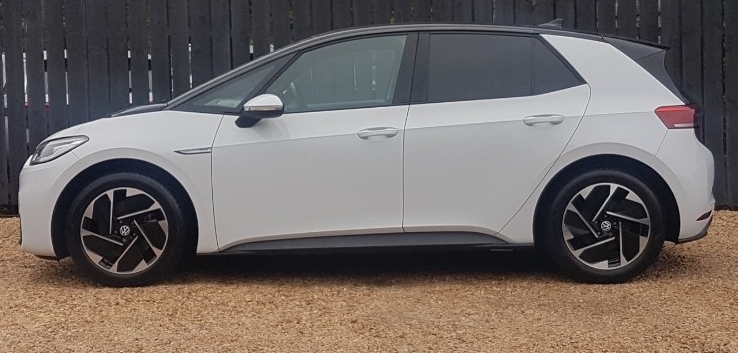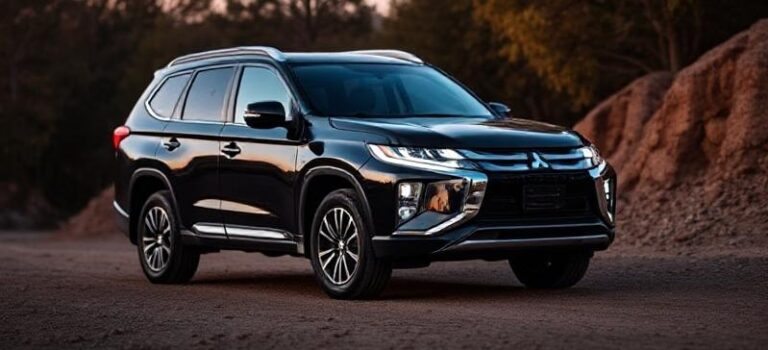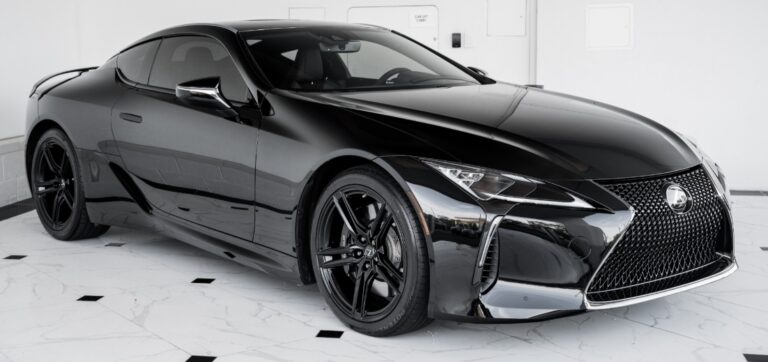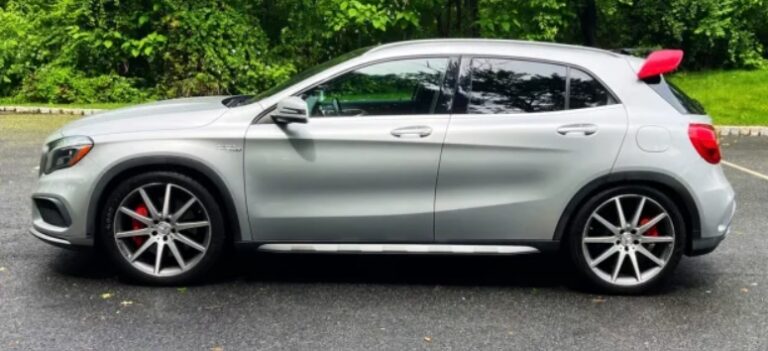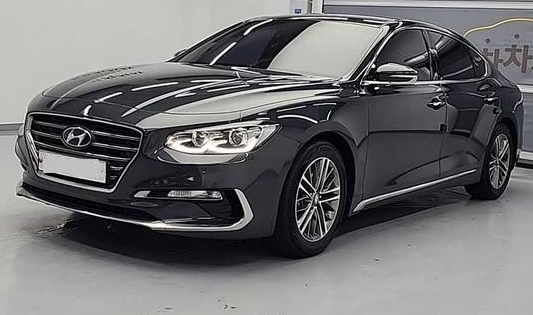Charging Forward: The Evolution of the Volkswagen ID.3
In the history of Volkswagen, there are two cars that define the company: the Beetle, which mobilized a post-war world, and the Golf, which created the “hot hatch” and defined the modern family car for generations. The Volkswagen ID.3 was conceived to be the third, a vehicle not just to enter a new market, but to fundamentally redefine the brand for the 21st century. Born from the ashes of the “Dieselgate” scandal, the ID.3 was more than a car; it was a high-stakes, all-in gamble on an electric future. Its evolution from a promising but flawed pioneer to a refined and mature cornerstone of the EV market tells the story of Volkswagen’s radical transformation.
The Genesis: A Concept for a New Era (2016-2019)
The journey of the ID.3 began publicly at the 2016 Paris Motor Show with the unveiling of the Volkswagen I.D. Concept. This sleek, futuristic hatchback was the first tangible evidence of VW’s new “Transform 2025+” strategy. Its name was significant: “ID” stood for “Intelligent Design,” “Identity,” and “Iconic Design,” while the number “3” signified its position as the third pillar in the company’s history, following the Beetle and the Golf.
Crucially, the I.D. Concept was the poster child for Volkswagen’s brand-new Modular Electric Drive Toolkit (MEB) platform. This purpose-built EV architecture was the group’s multi-billion-euro key to a scalable, cost-effective electric future. By placing a flat battery pack in the floor and a compact electric motor on the rear axle, the MEB platform promised a “long wheelbase, short overhangs” design, liberating interior space to a degree unheard of in a car with a compact exterior footprint. The ID.3 was to have the exterior dimensions of a Golf but the interior space of a Passat—a compelling proposition.
Production officially began at Volkswagen’s Zwickau-Mosel plant in Germany in November 2019, a facility that was painstakingly converted from internal combustion engine (ICE) production to a dedicated EV factory, symbolizing the brand’s irreversible pivot.
.
THIS could come in handy for your auto garage (and everywhere else!):

.
The Launch: A Rocky but Pivotal Start (2020-2022)
The first ID.3s to reach customers in the summer of 2020 were the pre-configured “1st Edition” models, designed to reward early adopters. These launch models were based on the mid-range battery and the most powerful motor, establishing a strong performance baseline.
ID.3 1st Edition (2020):
- Battery: 58 kWh (net usable capacity)
- Motor: 150 kW (204 PS), rear-wheel drive
- Trims: The 1st Edition was offered in three fixed specifications:
- ID.3 1st: The base model, featuring navigation, adaptive cruise control, and heated seats and steering wheel.
- ID.3 1st Plus: Added a rear-view camera, keyless entry, and upgraded “Design” package with matrix LED headlights and tinted rear windows.
- ID.3 1st Max: The top-tier launch model, boasting a panoramic sunroof, an augmented reality head-up display (a groundbreaking feature for the segment), and upgraded “Comfort” seats with electric adjustment and massage function.
However, the launch was far from smooth. The ID.3’s development was rushed, and immense pressure to meet deadlines resulted in significant software issues. Early cars were delivered with incomplete software, with promises of over-the-air (OTA) updates to follow. Owners reported glitches with the infotainment system, unresponsive screens, and inconsistent connectivity. It was a baptism by fire, a public demonstration of the immense challenge of transitioning from a traditional automaker to a tech company that builds “computers on wheels.”
The Full Rollout: Expanding the Family (Late 2020 – 2022)
Once the launch edition had paved the way, Volkswagen rolled out the full, configurable model range, allowing customers to choose their ideal combination of battery size, power output, and equipment. The lineup was structured primarily around three battery sizes, each with a corresponding model name.
1. ID.3 Pure Performance (45 kWh net battery):
- Years Produced: 2021-2022
- Motor: 110 kW (150 PS)
- Overview: This was the entry-level ID.3, designed for affordability and urban driving. With a WLTP range of around 217 miles (350 km), it was a capable city car and a direct competitor to other compact EVs.
- Trim Levels: The “Pure Performance” powertrain was typically available with lower-spec trims, often named City and Style. The City trim focused on essentials, while the Style trim added aesthetic upgrades like larger alloy wheels and enhanced interior lighting.
2. ID.3 Pro / Pro Performance (58 kWh net battery):
- Years Produced: 2020-Present
- Motor: 107 kW (145 PS) for the Pro; 150 kW (204 PS) for the Pro Performance.
- Overview: This was the heart of the ID.3 range, balancing range, performance, and cost. Offering a WLTP range of approximately 263 miles (424 km), it was the “do-it-all” option suitable for commuting and longer journeys. The Pro Performance motor was the same powerful unit from the 1st Edition.
- Trim Levels: This powertrain was offered across the widest array of trims, which were structured more like equipment packs:
- Life: The entry point for the 58 kWh battery, offering a solid base specification.
- Business: Aimed at company car drivers, adding features like a rear-view camera, keyless entry, and matrix LED headlights.
- Family: Added a panoramic glass roof, two-zone climate control, and a variable boot floor for practicality.
- Style: Focused on design, with premium interior accents and larger alloy wheels.
- Tech: Showcased the car’s advanced features, including the augmented reality head-up display and an upgraded sound system.
- Max: A combination of all the above packs, creating the fully loaded, top-of-the-range model.
3. ID.3 Pro S (77 kWh net battery):
- Years Produced: 2021-Present
- Motor: 150 kW (204 PS)
- Overview: The long-distance champion of the lineup. The large 77 kWh battery pushed the WLTP range to an impressive 340 miles (548 km), making it a truly viable alternative to ICE vehicles for road trips. A unique quirk of the early Pro S models was that they were only available as four-seaters. The weight of the larger battery pack necessitated this limitation to meet regulatory vehicle weight classifications. This was later rectified, and a five-seat option was introduced.
- Trim Level: The Pro S was primarily offered in a single, high-specification trim called Tour. As the name suggests, it came equipped with nearly all the features from the Max trim, emphasizing comfort and driver assistance for long-haul travel.
This complex, multi-layered trim structure provided immense choice but was also criticized for being confusing to customers.
The Facelift: Maturing the Platform (2023 – Present)
After three years on the market and invaluable feedback from over half a million customers, Volkswagen introduced a significant facelift for the ID.3 in 2023. This update was less about radical change and more about refinement and addressing the key criticisms of the original model. Volkswagen had listened.
Key Changes in the 2023 Facelift:
- Exterior Design: The front bumper was restyled, removing the playfully dimpled, honeycomb-like decal for a cleaner, more sculpted look with functional air curtains, improving aerodynamics. The black bar under the windscreen was removed, and the bonnet appeared longer, giving the car a more mature and premium presence. At the rear, the taillight clusters were updated to fully illuminate, whereas parts of the original clusters on the tailgate were mere reflectors.
- Interior Quality: This was the most crucial upgrade. The hard, scratchy plastics that dominated the dashboard and door panels of the original—a major point of criticism—were replaced with soft-touch, foam-backed surfaces finished in Artvelours Eco, a microfiber material containing 71% recycled plastics. This single change dramatically elevated the cabin’s perceived quality, making it feel more aligned with its price point.
- Technology and Usability: The small 10-inch infotainment screen was retired, with a larger 12-inch display becoming standard across the range. The underlying software was updated to the next generation, offering a more stable, faster, and intuitive user experience. New convenience features were added, such as Plug & Charge capability (allowing seamless charging without an app or card at compatible stations) and an intelligent EV Route Planner that incorporates charging stops into navigation.
- Simplified Model Lineup: Volkswagen wisely streamlined the confusing trim structure. The new lineup consisted of two primary models:
- ID.3 Pro (58 kWh): Later renamed Pro S, still offering the choice of 145 PS or 204 PS motors in some markets.
- ID.3 Pro S (77 kWh): The long-range model, now standardized as a five-seater.
Instead of fixed trims like “Family” or “Tech,” customers would now choose a base model and add optional packages (e.g., Design Package, Comfort Package, Assistance Package) for greater clarity and customization.
The Future: Performance and Legacy
With the launch of the facelifted model, Volkswagen also confirmed the imminent arrival of a high-performance ID.3 GTX version. This long-awaited model is expected to feature a dual-motor, all-wheel-drive setup, delivering significantly more power and finally providing the electric equivalent to the legendary Golf GTI and R models.
The evolution of the Volkswagen ID.3 is a microcosm of the entire legacy auto industry’s journey into electrification. It began with immense ambition, stumbled through well-publicized “beta-testing” pains, but ultimately listened, learned, and adapted. From the software-plagued 1st Edition to the polished and premium 2023 facelift, the ID.3 has matured from a risky proposition into a class-leading electric vehicle. It successfully established the MEB platform as a force to be reckoned with and paved the way for an entire family of ID models. It may have had a turbulent start, but the ID.3 has firmly cemented its place as the third, and arguably most important, transformative chapter in the history of the people’s car.
